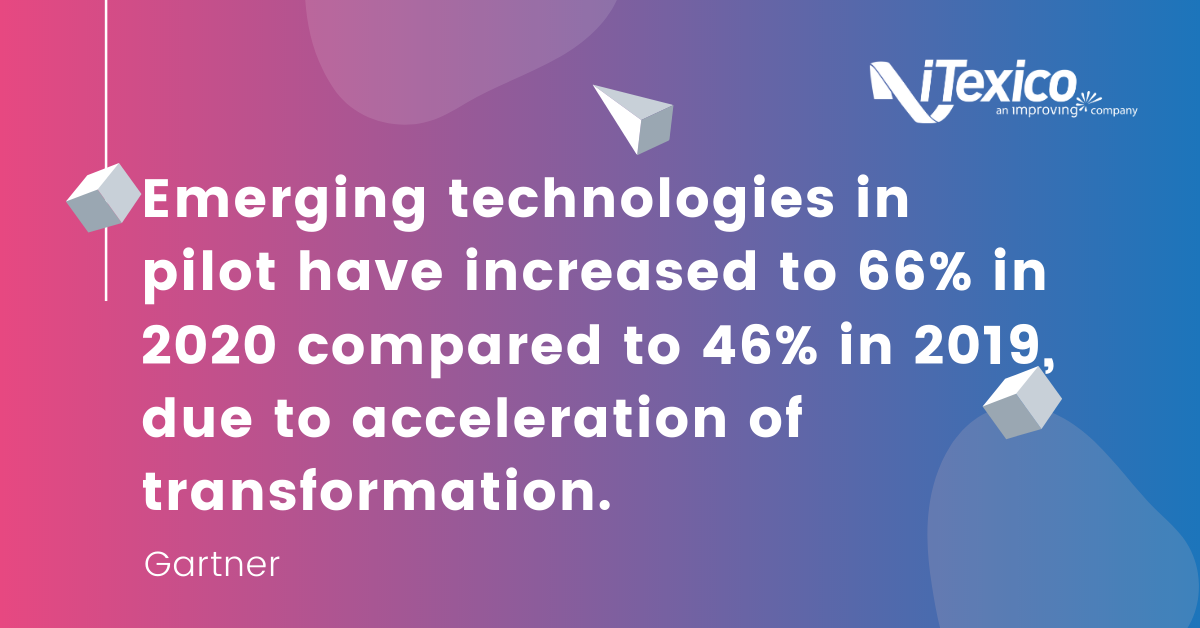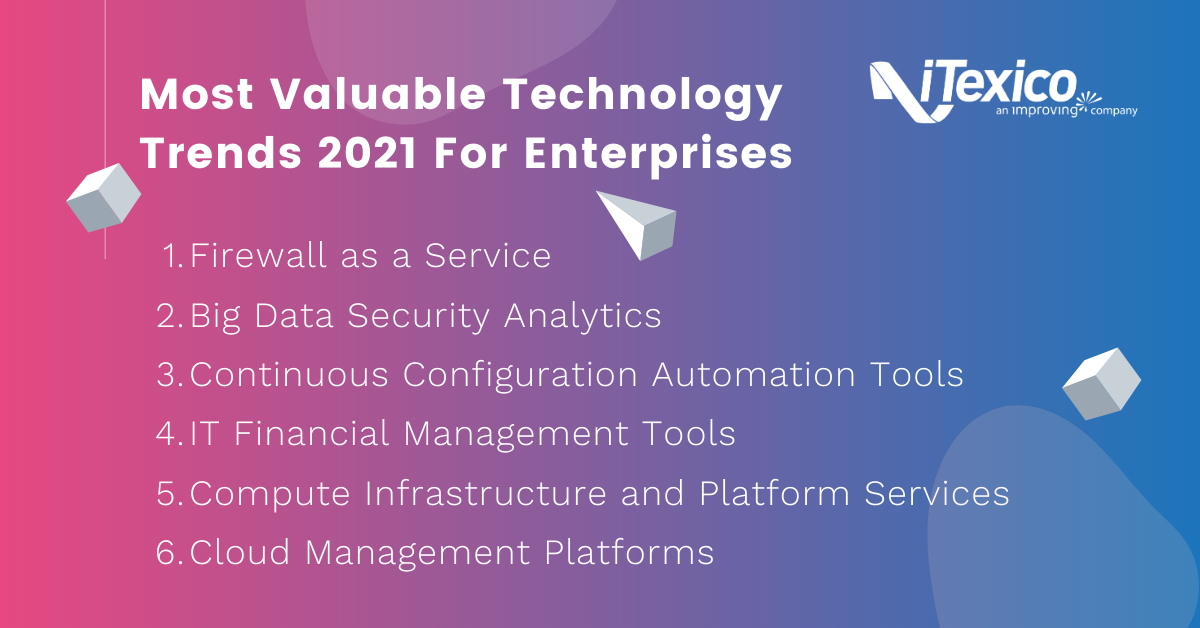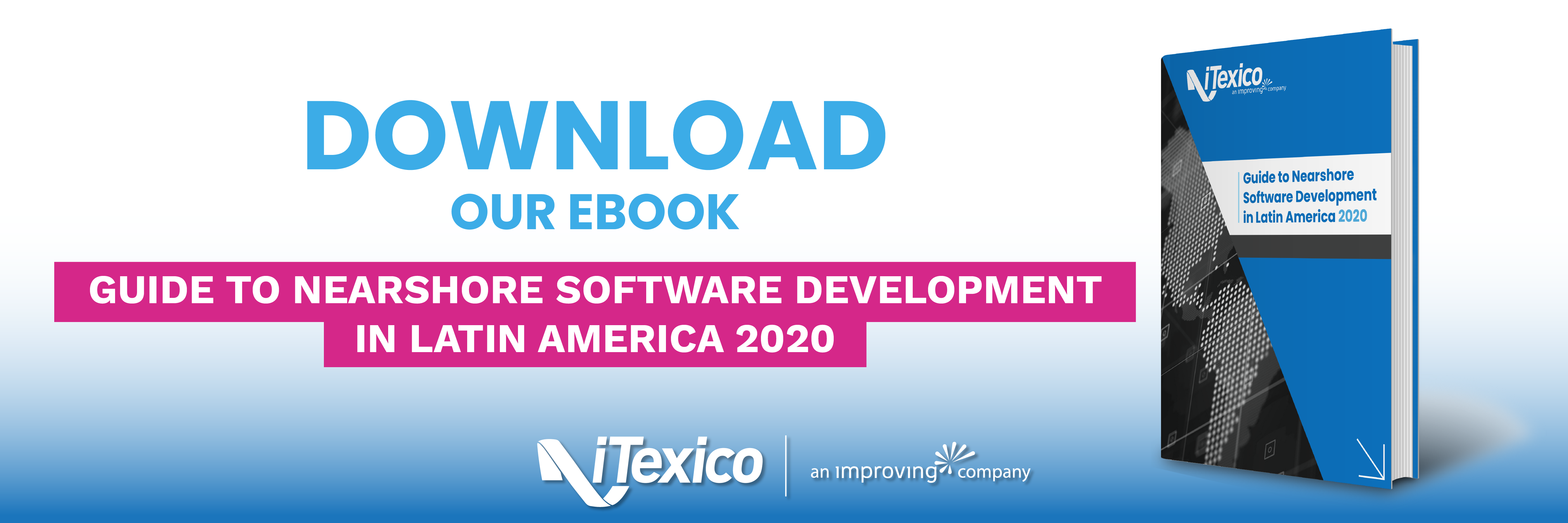8 minute read
Most Valuable Technology Trends 2021 For Enterprises
Whatever disasters may strike the globe, progress must never flag, fail, or pause. Retaining momentum no matter the roadblock is a central figure for any business, regardless of how that momentum shows itself. For the past year, sweeping changes have been made by necessity to keep the globe moving, aligning new business goals with their new environment. Humans are among the best adapters in nature, with recent history being all the proof needed for it.
According to Gartner, organizations have the need to continue investing in technology to support the new virtual work environment. This has been accomplished in spite of the delays in some digital innovation plans, the root cause being the economic impacts of COVID-19. As a result, the number of emerging technologies in pilot being higher this year (66%) compared to 2019 (46%) due to this acceleration of transformation.
 Of equal note is the number of digital workplace technologies in pilot, all of which have almost doubled to 82% this year as compared to 44% in 2019. The state of affairs notwithstanding, remarkable progress has been made in carving out new niches via technological growth, as more and more companies have begun incorporating these new technology trends into their infrastructure.
Of equal note is the number of digital workplace technologies in pilot, all of which have almost doubled to 82% this year as compared to 44% in 2019. The state of affairs notwithstanding, remarkable progress has been made in carving out new niches via technological growth, as more and more companies have begun incorporating these new technology trends into their infrastructure.
For many businesses, 2020 has been a learning experience. A hard, unnecessary one in many cases, but what’s done is done. Going forward into the coming years, the status quo has new standards to live by, part of which involves being better prepared for blindsiding events like these. As for now, there are a few things worth looking forward to in the upcoming year.
Top Emerging Technologies in 2021 for Enterprises
There are some newcomers that bear paying attention to, especially for enterprise businesses. The following technologies we’re listing are some of the top emerging technologies for large enterprises with the most value and least risk of deployment. These will be your safest, smartest bets for getting a head start in the game.
This high value is based on analysis of where these specific technologies have the potential to increase revenue through better products and services, increase cost efficiency, speed, agility, and improve employee productivity.

Security
Your data and network infrastructure are among your most valuable assets in your company. Should the worst happen, and cyber attacks infiltrate, propagate, cause data breaches and data loss, your very reputation and function as an organization is marred, not to mention the cost involved in removing the threat and patching your security parameters back up. Security technologies are designed to safeguard your company from potential threats and risks.
Firewall as a Service (FWaaS)
Just as a resistant physical wall helps contain fire from spreading in a building, a firewall helps prevent unauthorized access to the network by monitoring all incoming and outgoing traffic, as well as applying and enforcing the business’ security policies.
For many companies, firewalls are among the first lines of defense in preventing intrusions.
Initially, firewalls were created to protect on-site networks. However, due to more and more applications being moved to the cloud, firewalls had to evolve by necessity to meet growing demand. FWaaS is a revolutionary way of delivering firewall capabilities as a cloud service. Being cloud-based doesn’t mean it simply hides physical firewall appliances, but it eliminates the appliance form factor, making network security available everywhere.
This means that the entire organization is connected to a single global firewall with a unified security policy. This allows ample protection in virtually any environment, securing data from any available location. This provides immense versatility in where, when, and how your employees can accomplish their work, especially if they’re a remote team working from home.
Big Data Security Analytics
While on-premise centers are still widely used, the flow of the cloud’s continual growth has caused a shift in where businesses are choosing to store their data, applications, and network. As businesses move en masse from on-premise to digitalization and cloud applications, they have increased risk of cyber attacks. Protection isn’t just based around prevention, it has to be proactive as well, stemming from detection and response.
Analytics is critical in this junction, as the most telling data leading toward incident response comes in the form of big data. Big data analytics helps detect and identify change of patterns, execute complex analysis through large amounts of data in a quick manner, and so on. As the name implies, big data utilizes an enormous amount of information, most of which would bury valuable information that analytics tools previously couldn’t compile and index.
As big data security analytics collects, stores, and analyzes large amounts of security data across the enterprise company’s various technologies in real-time, it’s able to detect anomalies and identify malicious activities through correlation algorithms. This relevant data can then be packaged neatly into a report that provides actionable intel for your IT department, who can then properly execute necessary changes and repairs.
Digital Workplace
Take your classic, traditional workplace. Consider if you were to transplant that workplace into a digital environment, how that would work and function. A digital workplace is precisely that, a setting where your employees are assisted by personalized services intended for various roles and collaboration tools intended to connect individuals within the company together. Through innovating the digital workplace, you can increase employee retention, engagement, satisfaction, and productivity, helping to make their online experience as easy from a remote position as it would be in an office setting.
Continuous Configuration Automation Tools
CCA tools are a part of the DevOps toolchain, created with the goal of developing more reliable software faster. There’s plenty of digital work that becomes monotonous, dense, and challenging to work through. These tools support developers in automating the configuration and development of both physical and virtual infrastructures in a systematic way, giving visibility to the state of infrastructure within an enterprise.
Essentially, they provide your developers with a simplified way to develop company infrastructure. They provide a framework for codifying and managing configuration and provisioning tasks like any other application code. As a result, a variety of systems can have their configurations easily managed, ranging from applications and servers to databases and all manner of IT infrastructure.
IT Financial Management Tools
ITFM tools serve as financial accounting for IT, helping enterprises understand how their resources are being spent in a transparent way. While CIOs may not be necessarily well versed in exactly how all of the IT processes, practices, and resource consumption works, these tools provide them with the means to clearly understand and run their IT departments like a business.
ITFM tools pull accounting data related to software, hardware, and other IT costs, and then builds reports that enable IT leaders to manage their business with transparency, accuracy, and financial visibility. As a result, executives benefit from better decision-making and accelerated investments for digital innovation initiatives. The more informed and more views are provided to the executives, the easier making sound financial decisions from a total cost perspective becomes.
Compute Infrastructure and Platform Services
Storage and database technologies are the culmination of all your company’s information. Compiling data into a database provides an organized, processed source for users to then search through the find information, details, and stored data for future use. If it had a physical counterpart, it would be akin to a filing cabinet, wherein information is organized and separated into categories for easy retrieval. Without storage and database technologies, it’d be fairly difficult to imagine how any company could operate.
Cloud Management Platforms
Like everything else on this list, storage and database technologies have become involved in the cloud as well. Storing your data in the cloud provides you with a free-floating amount of information that can be accessed anywhere, as opposed to on-premise data centers that could only be accessed from certain locations.
As a result, Cloud Management Platforms were created for the express intent of managing cloud environments. Whether those environments are public, private, or hybrid, ensuring you have the proper resources and tools to effectively work with your digital infrastructure is imperative for keeping your data accessible, organized, and functional.
Conclusion
There’s a lot of technology that bears investigating. Incorporating any one of these resources into your company’s infrastructure has the potential for far-reaching results, accelerating your company’s growth to fit into the digital age. More and more companies are migrating to the cloud, especially after how heavily COVID-19 impacted those companies who were still grounded in particular. The cloud provides versatility, protection, and potential for growth.
Helping organizations reach new heights through the implementation of upcoming technologies is a core competency of iTexico. Now an Improving company, we possess the expertise, resources, and skilled personnel needed to advise, consult, and assist your business through innovation. If you’re interested in what we can offer, visit our contact page to get in touch for a consultation.



Post Your Comment Here